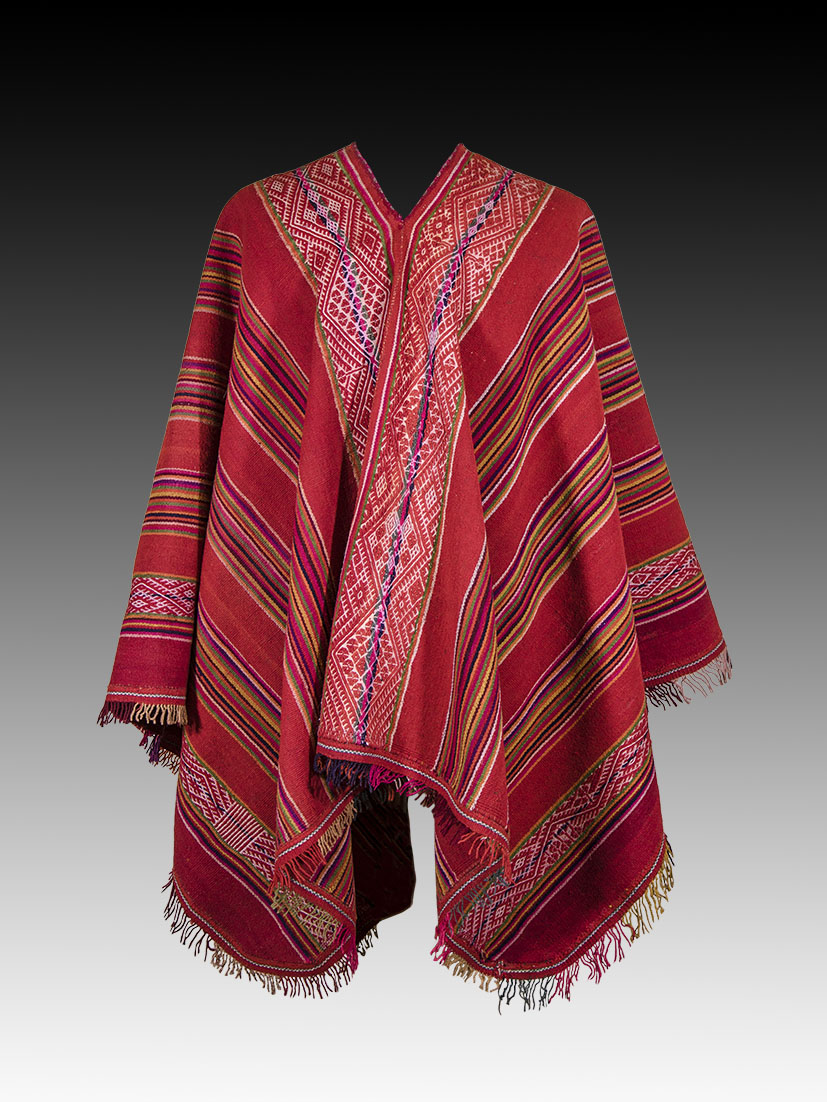BACK TO TOP
TEXTILES
Tapacarí ceremonial poncho.
Cochabamba. Bolivia. Mid 20th century.
This poncho shows the typical structure of Tapacarí: weaving on a stake loom, in two panels with four edges joined in a mirror, it shows two wide central work lanes and two narrower ones on their flanks, all with a rhombic geometric design, and six lanes of polychrome lists. In addition to the excellence of the cloth obtained by the weaver, there are three elements that denote the ceremonial hierarchy of this piece: its generous measurements (1.54 m -60.63 in- long and 1.48 m -58.26 in- wide), the delicacy of the perimeter fringe and the ñawi border (little eyes) that protects its mouth.
The fabrics of Tapacarí bear a very special imprint that shows the influence that the Inca policy imposed on it since the 15th century, by transferring groups originating from Cusco to conquered Aymara territories. A clear inheritance of those processes, we observe in this garment the ornamental technique of the false double face of the warp, present in the fabrics of Cusco and in the matras, girdles and ponchos of Araucanía.
It is interesting to note that it has not yet been possible to establish where this technique originated, whether in Cochabamba or Cusco. The experts hold arguments in open opposition. For some, "The origins of this technique appear to be in the valleys of Chuquisaca and Cochabamba and during the Late Horizon they spread to the north of La Paz and Cusco (...)" (1)
While, for others, "The Inca influence was decisive throughout this region and this is evident in its textiles, visibly related to the fabrics of Cusco, especially those of Ch'illka and Lauramarca..." (2)
Be that as it may, finding the same textile technique in such distant parts of South America indisputably documents the enormous imprint of transculturation operated during the heyday of Tahuantinsuyo.
Notes:
1. Denise Arnold: Weaving Life. Musef Textile Collection. Ed. Central Bank of Bolivia Cultural Foundation, La Paz, 2013, p. 343.
2. Teresa Gisbert, Silvia Arce, Marta Cajías: Textiles in the Bolivian Andes. Ed. Bolivian Photo Agency / Quipus Cultural Fund. Peace. 2003, page 241.
S.O. XV-GBOM
Are you interested in selling some works?
Send us an email briefly indicating
which works you intend to put on sale, and we will respond. click here
Subscribe to our newsletter to be updated.
Check our Newsletters